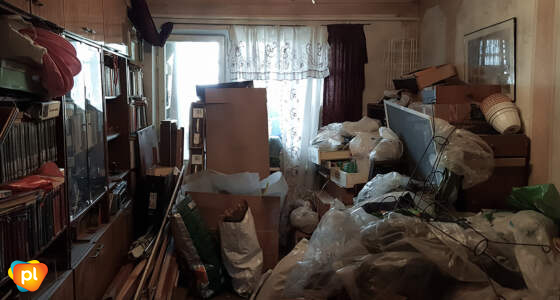
Many years ago I visited a client in his home address. I had been told by other services that this particular gentleman was a serious hoarder.
The morning of the visit I mentally prepared myself for what I might expect to see. I was thinking rubbish in the lounge room, clutter in the kitchen and boxes in the bedroom. What I found exceeded all my expectations.
The walls and floors of his unit were not visible. The lounge room was piled high with old newspapers and magazines. There was nowhere to sit in the lounge room and we had to squeeze through a small passage way to get to the kitchen. Once we made this dangerous trek through to the kitchen, the squalor took on gargantuan proportions. Piled high to the ceiling on every available space were stacks of old margarine containers, plastic milk bottles and assortments of other items. The kitchen was completely unusable as a place to cook or prepare food. This was a dangerous situation for both my client and any anyone who visited.
More recently I bumped into a former client. He had found an old saucepan on the side of the road. It was rusty, out of shape and missing the handle. However given his excitement, his find was like stumbling on gold. He exuberantly told me of his plans to taking home his latest prized possession, to be cleaned of its rust and used for cooking once he had found a handle.
Our home environment is a key element in the foundation of a good quality of life for any person, whether living with HIV or not. For people living with HIV, good health is paramount, so living in a place we can call our own, that supports our physical and mental health is significant. When hoarding and squalor affects people living with HIV, our health begins to deteriorate and shame often compounds these situations where things appear to have spiralled out of control.
Squalor can escalate into Severe Domestic Squalor (SDS) and refers to an environment that is extremely cluttered and in a filthy condition. The property usually has an accumulation of waste, decomposing food items, excrement, rubbish and personal items that puts the health and wellbeing of the person who lives there in jeopardy.
Stories occasionally surface in the media and include footage of yards piled high with rubbish. The Bobolas family of Bondi have become notorious with the endless council interventions to clear up and remove the rubbish only to have the family re-embarking on their mission to refurbish their property with new items. The shocking story of a mummified body being found by cleaners in a Sydney property also recently made the headlines. Police confirm the property owner was known to hoard and claim the body may have been there for more than 10 years.
To begin to understand the complexity of hoarding and squalor, let’s first look at the definition.
Hoarding involves an excessive collection of items along with a failure to remove or discard them. Rooms and furniture are no longer used for the purpose for which they are designed. For example, you can no longer ‘sit’ in the lounge room due to the clutter of items, even the lounge itself is unusable. You can no longer shower in the bathroom as the shower cubicle is ‘chock-a-block’ with assorted items. Kitchen benches are piled high with old newspapers while the oven and microwave are unusable because they house a collection of empty containers.
Animal hoarding involves accumulating a large number of animals without providing basic nutrition, sanitation and veterinary care. In turn, the animals deteriorate into a poor state of health and neglect. The RSPCA often intervene to rescue animals in this situation. Sometimes the animal will need to be ‘put down’ for humane purposes.
So why do people hoard? Why do some people find it impossible to part with items they don’t need? Is it simply the case, that one person’s trash is another person’s treasure? Or are there other factors involved?
People can hold very strong beliefs about their possessions. These items may represent an emotional value or provide comfort and a sense of safety. They can sometimes serve as reminders of a person or a time in their lives. They may feel that it is there responsibility to save the item or that it could be useful either now or in the future. It could be attributed to the loss of someone special in their lives and they strive to fill the void with an endless collection of items.
If you, your friends, or your family have concerns about your living conditions fortunately there is support available.
- Catholic Healthcare Hoarding and Squalor Program provides one on one assistance to support you to maintain a safe living environment – Ph: 1800 225 474
- The Health Service Research Unit (Pathways Through The Maze) is a great resource to support people living with situations of Hoarding and Squalor
If you’re living with HIV and you want some support around hoarding, get in touch with the Positive Life peer navigators (who live with HIV themselves) on (02) 8357 8386 or freecall 1800 245 677 or email contact@positivelife.org.au
2 Comments
Comments are closed.







On a visit to Sydney for the Gay Games many years ago a friend gave me his unit near St Vinies to stay at (he was away at that time so unit was available for me). He was Poz and also needed walking sticks to get around from the bashing he revived of Oxford St many years earlier. There was only a narrow path in each room, every space was full of hoarded items. Somehow it seems he had fallen through the system and was missing assistance and help to make is living just that little bit better for him.
A amazing article.